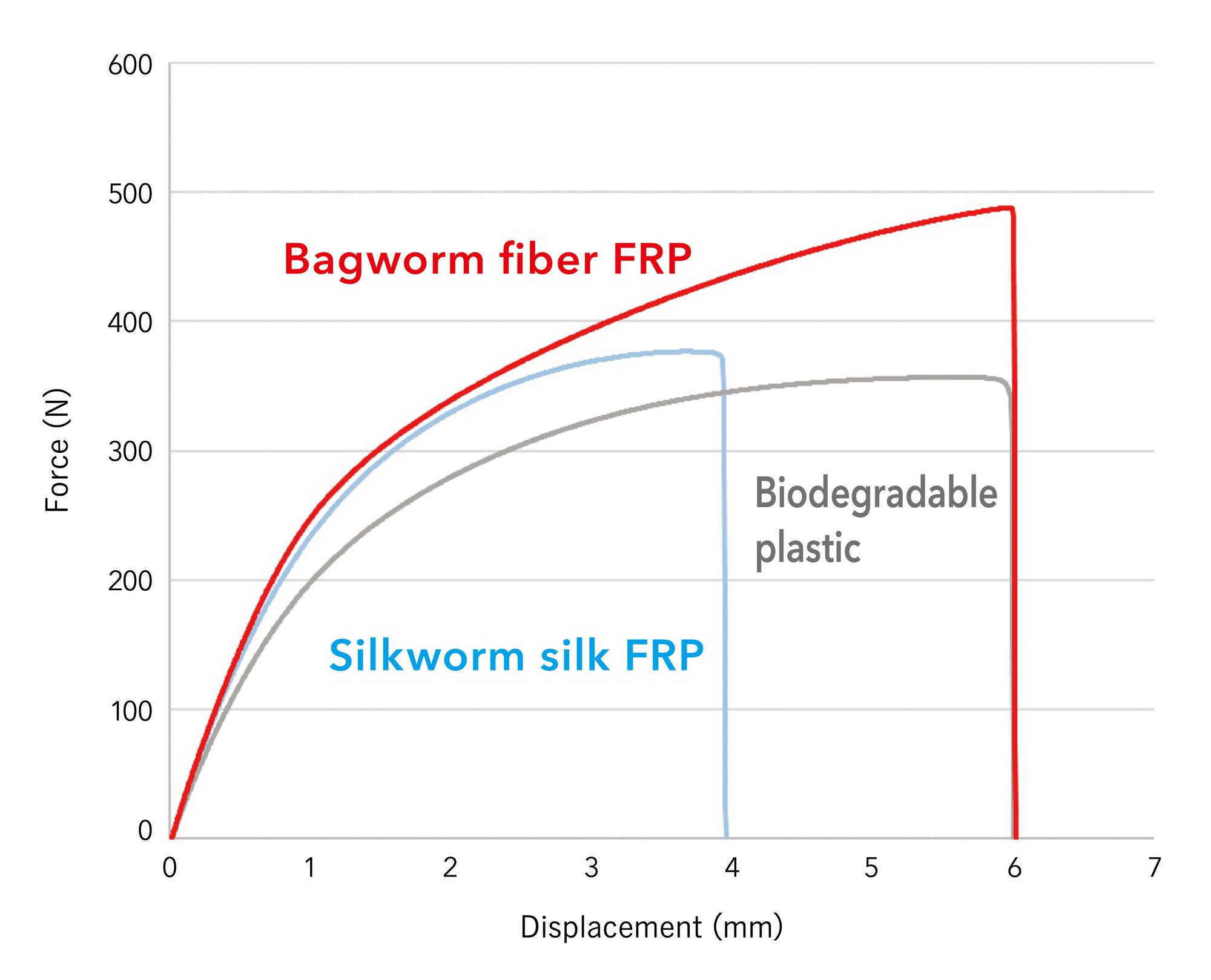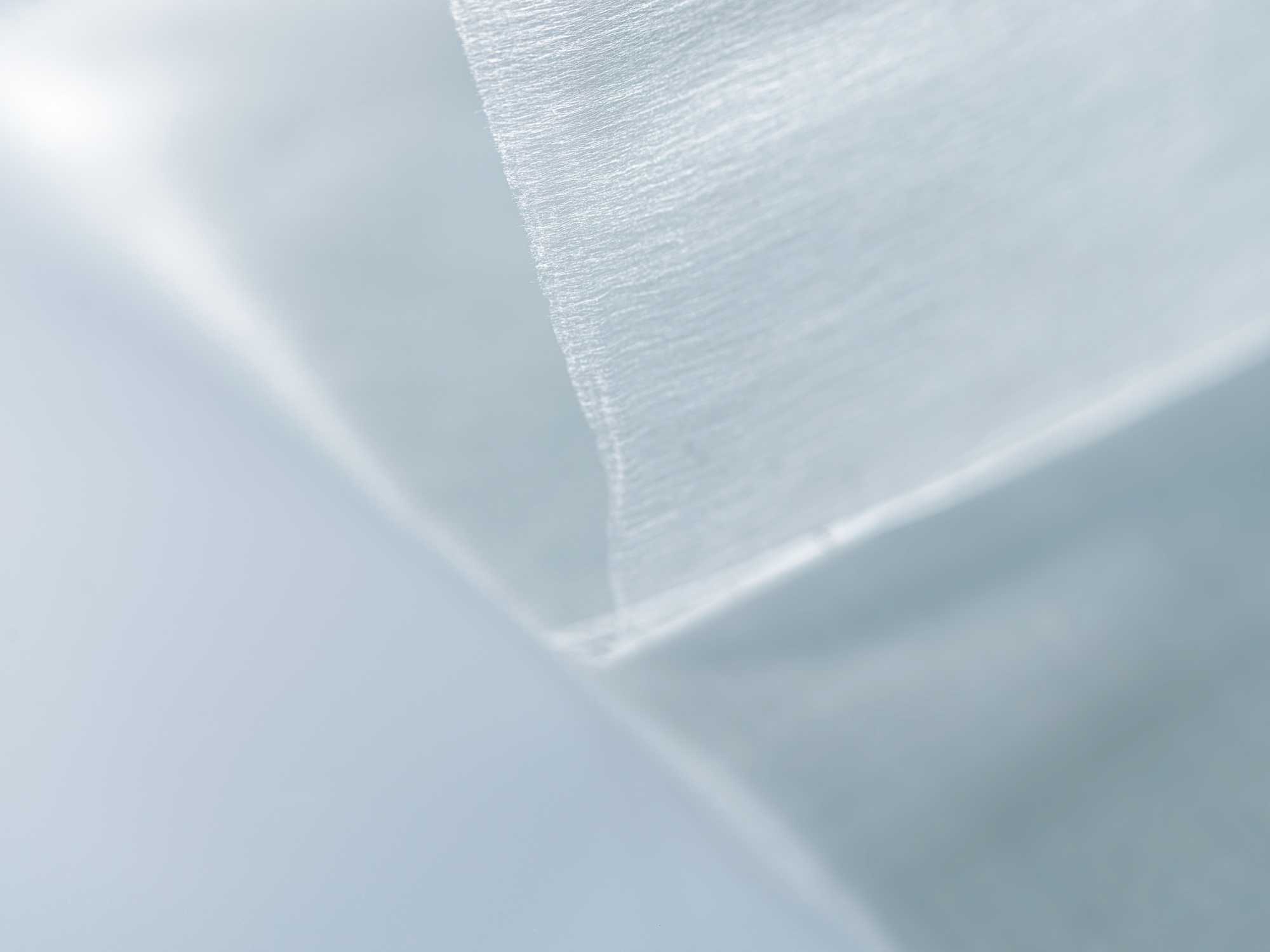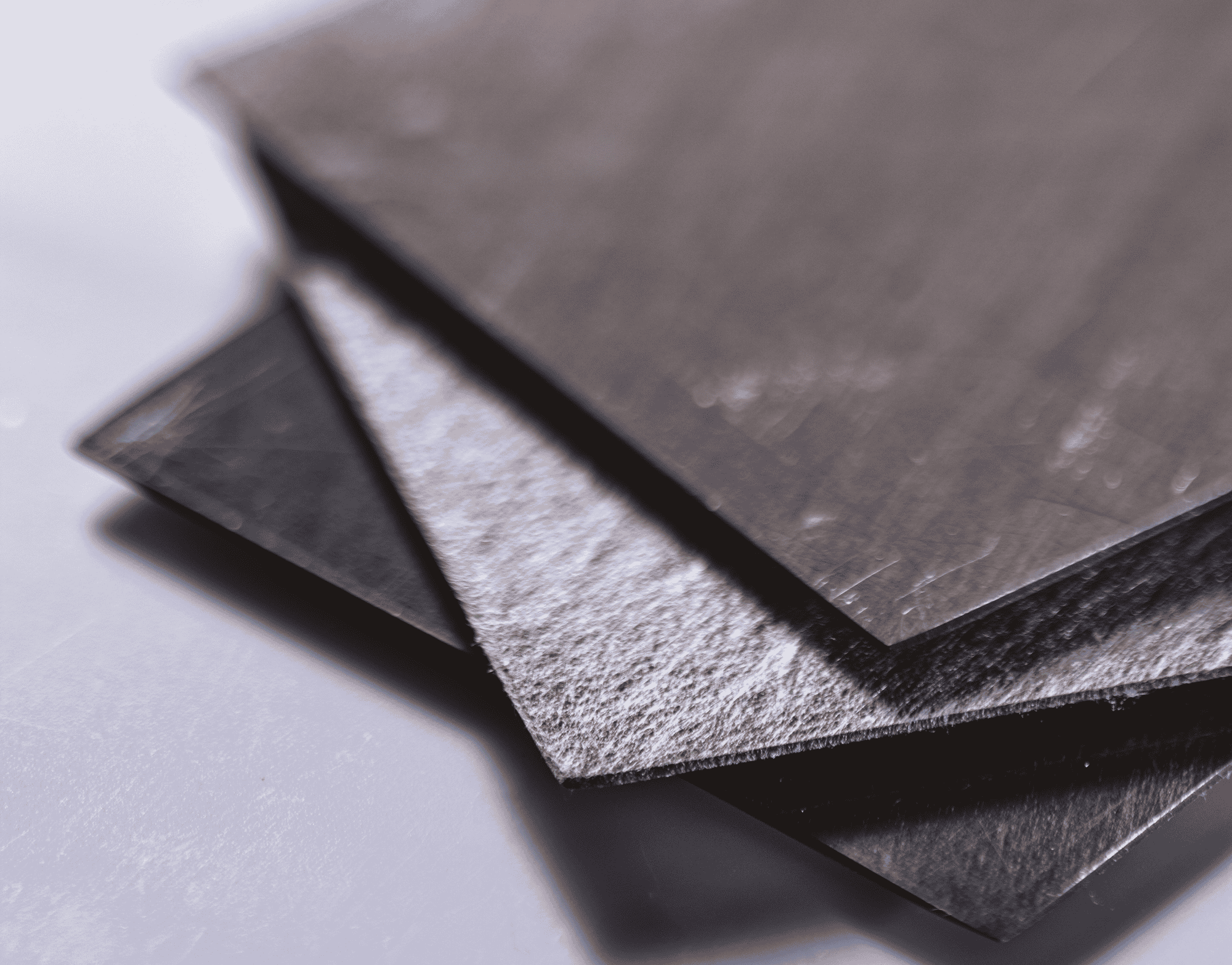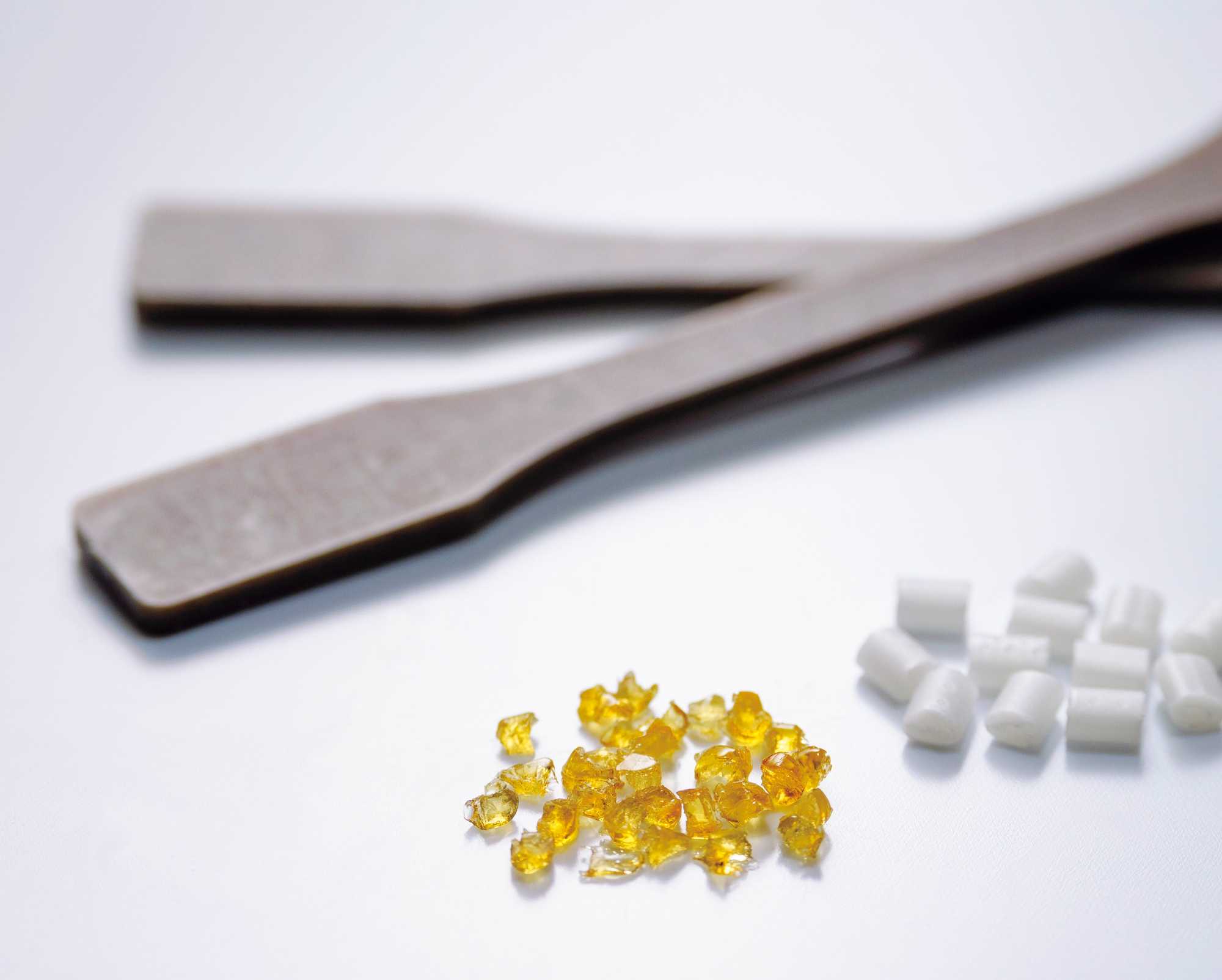MINOLON(ミノロン)研究・開発素材
What is a MINOLON Sheet ?
A MINOLON sheet is a thin sheet that makes full use of delicate-yet-strong bagworm fibers. Using know-how cultivated through our ecological research into bagworms, we have created a manufacturing method in which bagworms themselves create MINOLON sheets.
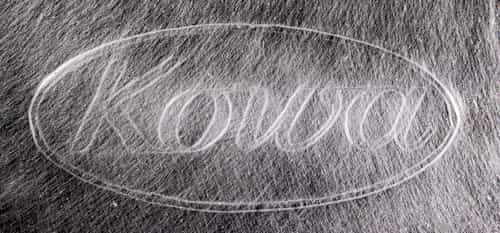
Structure of MINOLON Sheet
Although at first glance MINOLON sheets look like regular, non-woven fabric, their structure is in fact the same found within a bagworm’s larval nest. The randomly layered bagworm fibers are bonded together by a natural adhesive produced by bagworms, which creates a structure that widely disperses any incoming forces.
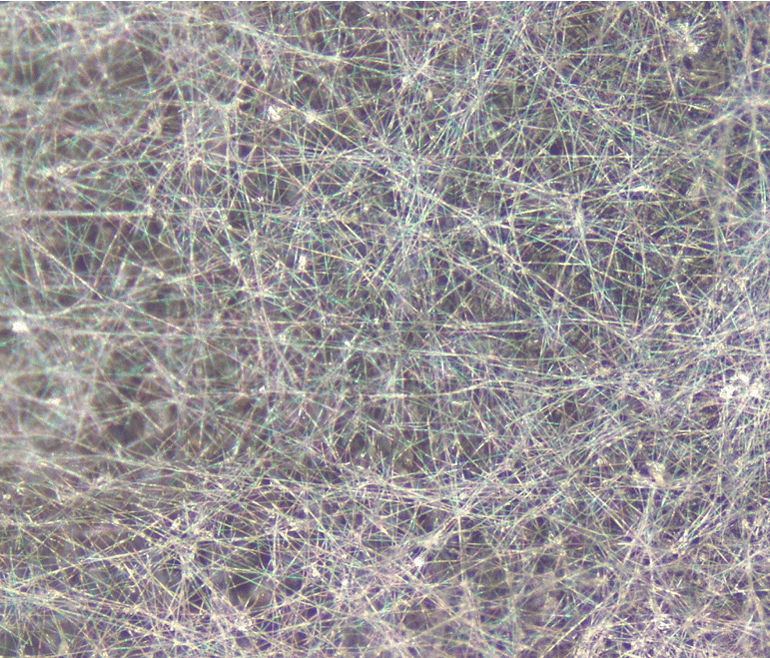
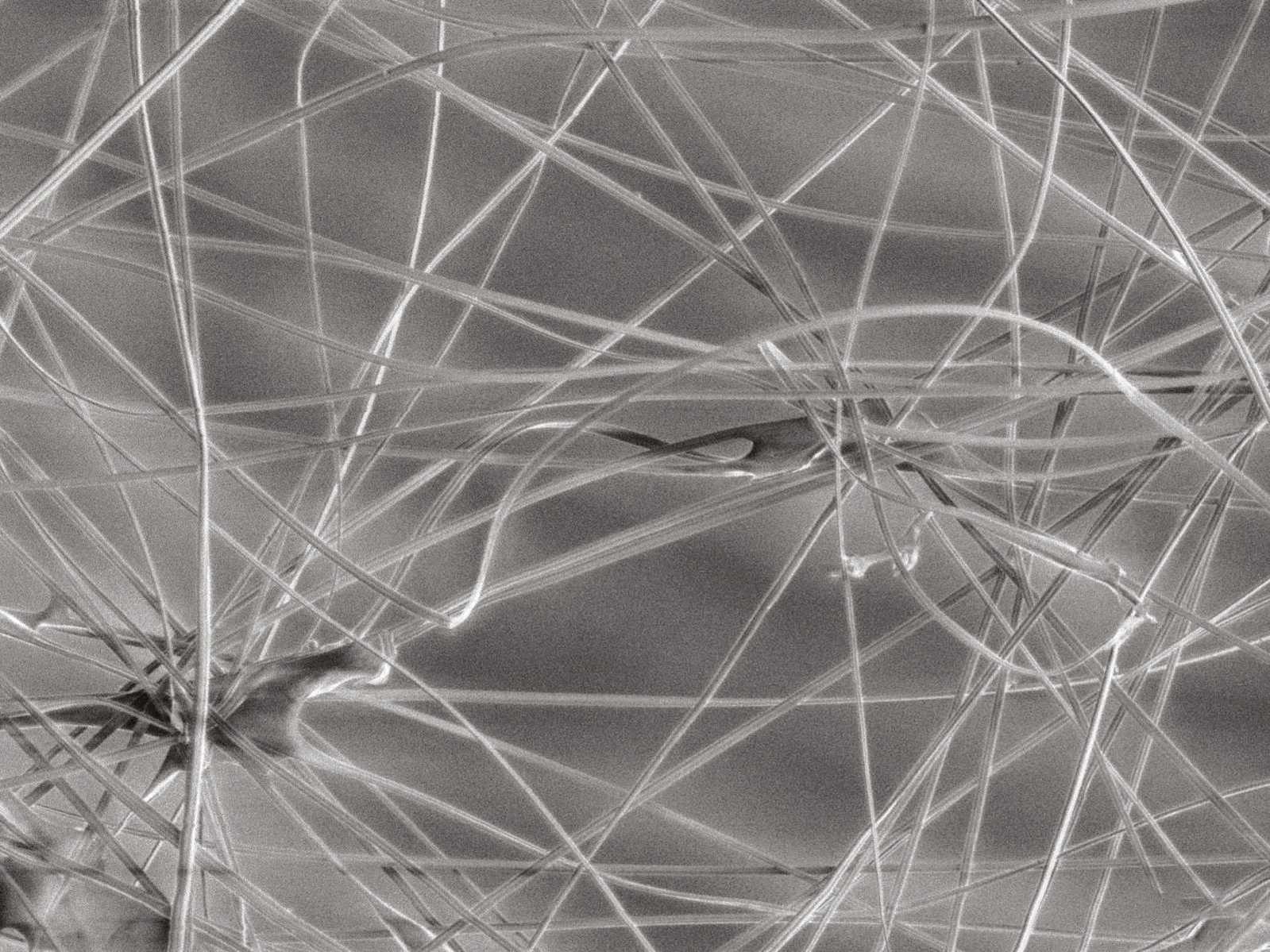
Developing New Materials
Imbued with Bagworm Fiber’s Unique Qualities
MINOLON sheets can be combined with various types of materials. Our research shows that combining certain materials with a MINOLON sheet creates distinctive properties not seen elsewhere. Going forward, we expect to see innovative development of new materials that utilize MINOLON sheets’ properties in a broad range of fields.
CFRP × MINOLON Sheet
Carbon fiber reinforced plastics (CFRP) are broadly used in products that need to be light yet strong. Combining CFRP with a MINOLON sheet creates a tough material that absorb shocks while retaining CFRP’s properties. Moreover, in terms of recycling CFRP, interesting data is emerging through the combination CFRP with MINOLON sheets and with it exciting prospects for future developments.
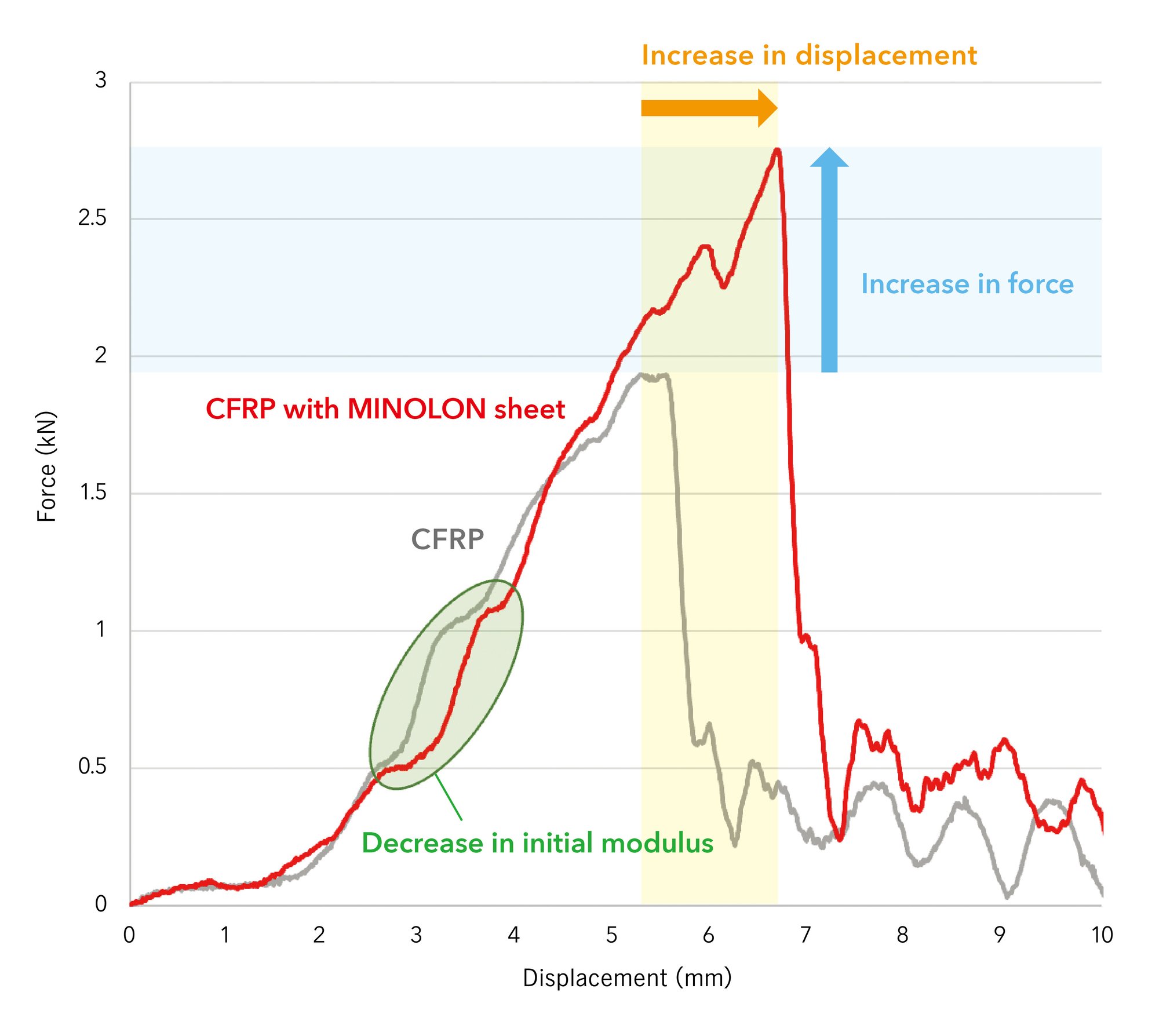
Uniquely Effective in High-Speed Impact Settings
High-speed impact tests (10m/sec) showed that MINOLON sheet composite CFRP affects the initial elastic modulus and toughness (breaking strength and breaking displacement).
Comparing CFRP with MINOLON sheet composite CFRP shows the latter has lower initial elastic modulus, higher breaking strength (from a test force), and higher breaking displacement. In other words, it’s clear that combining CFRP with a MINOLON sheet creates a material that can absorb strong impacts while remaining break-resistant.
Special Properties Borne from MINOLON Sheet’s Thinness and Lightness
Even when combining CFRP with a thin, lightweight MINOLON sheet, CFRP's characteristic performance remains unimpaired. No clear effect was observed when combining a MINOLON sheet with CFRP in a three-point-bend test or a Charpy impact test (designed to evaluate CFRP’s strength properties) or in an interlaminar shear strength test (which evaluates the level of delamination at the time of breakage).

What is FRP?
Fiber Reinforced Plastics (FRP) is a general term for plastics that have been strengthened in physical properties and resistance by combining fibers with plastic base materials. Common examples include CFRP (with carbon fiber), GFRP (Glass Fiber Reinforced Plastics), and AFRP (Aramid Fiber Reinforced Plastics).
FRP is used in various products due to lightweight, strong, and easy to process characteristics. However, its durability creates challenges from an SDGs perspective, including limited recycling methods and adding to microplastic pollution.
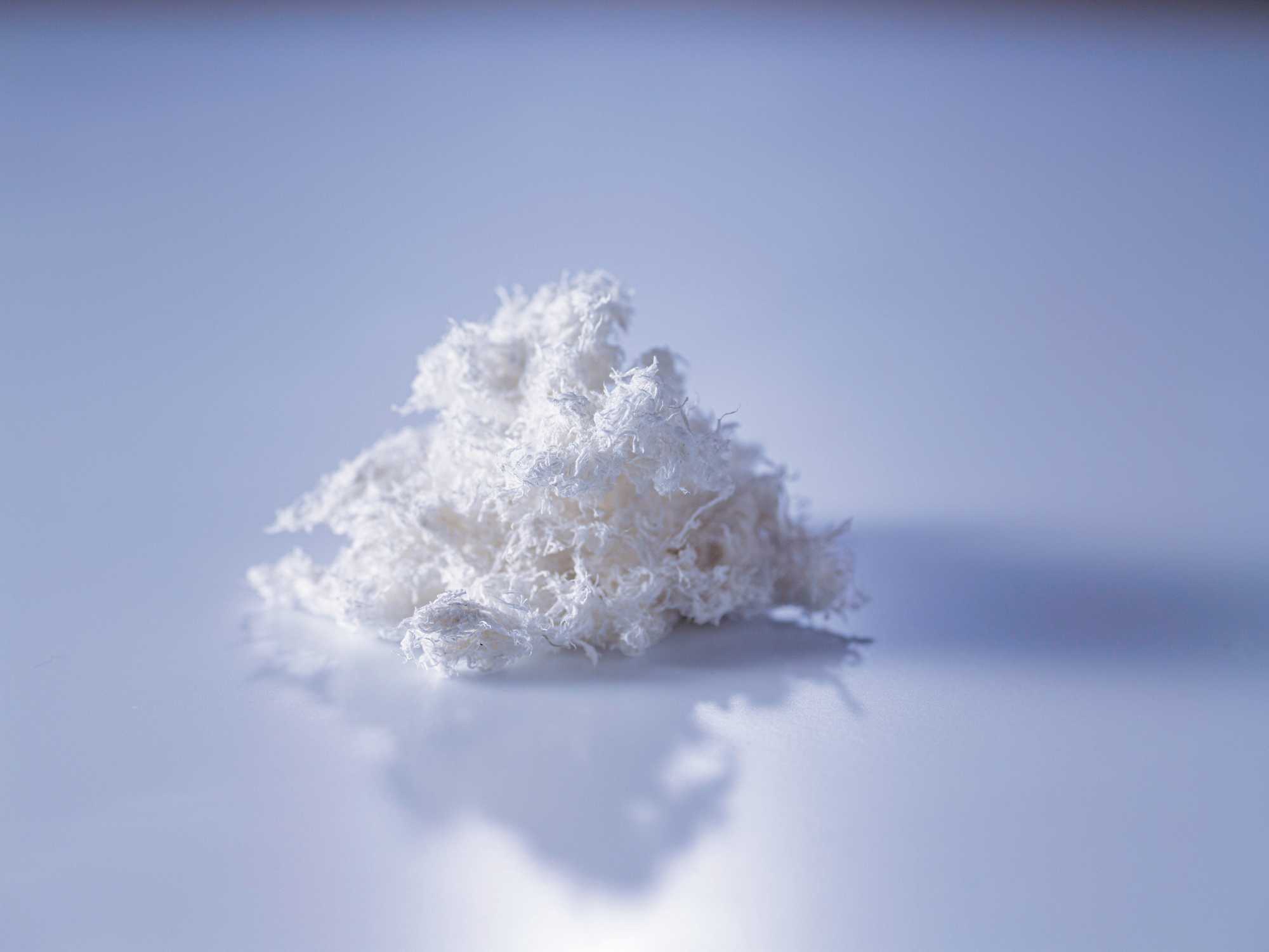
Exploring New Uses for Bagworm Fiber
As a new FRP option, we are developing an environmentally friendly FRP that combines bagworm fiber, which combines strength and eco-friendliness, with biodegradable plastic.
Never-Seen-Before Innovative Qualities
Evaluating the physical properties of FRP we created by combining shortened bagworm fibers with biodegradable plastic (bagworm fiber FRP) revealed some most interesting properties.
Generally, FRP are combined with short fibers are known to have increased strength (test force) and elastic modulus, but decreased elongation (displacement), as in the case of silkworm silk FRP, which we evaluated for comparison.
Compared to biodegradable plastic, bagworm fiber FRP is highly tough with increased strength (test force) and elastic modulus, while maintaining the same degree of elongation (displacement).
As described here, bagworm fiber FRP has unprecedented, innovative properties and is expected to be used to develop new products that cannot be created with existing FRP.
